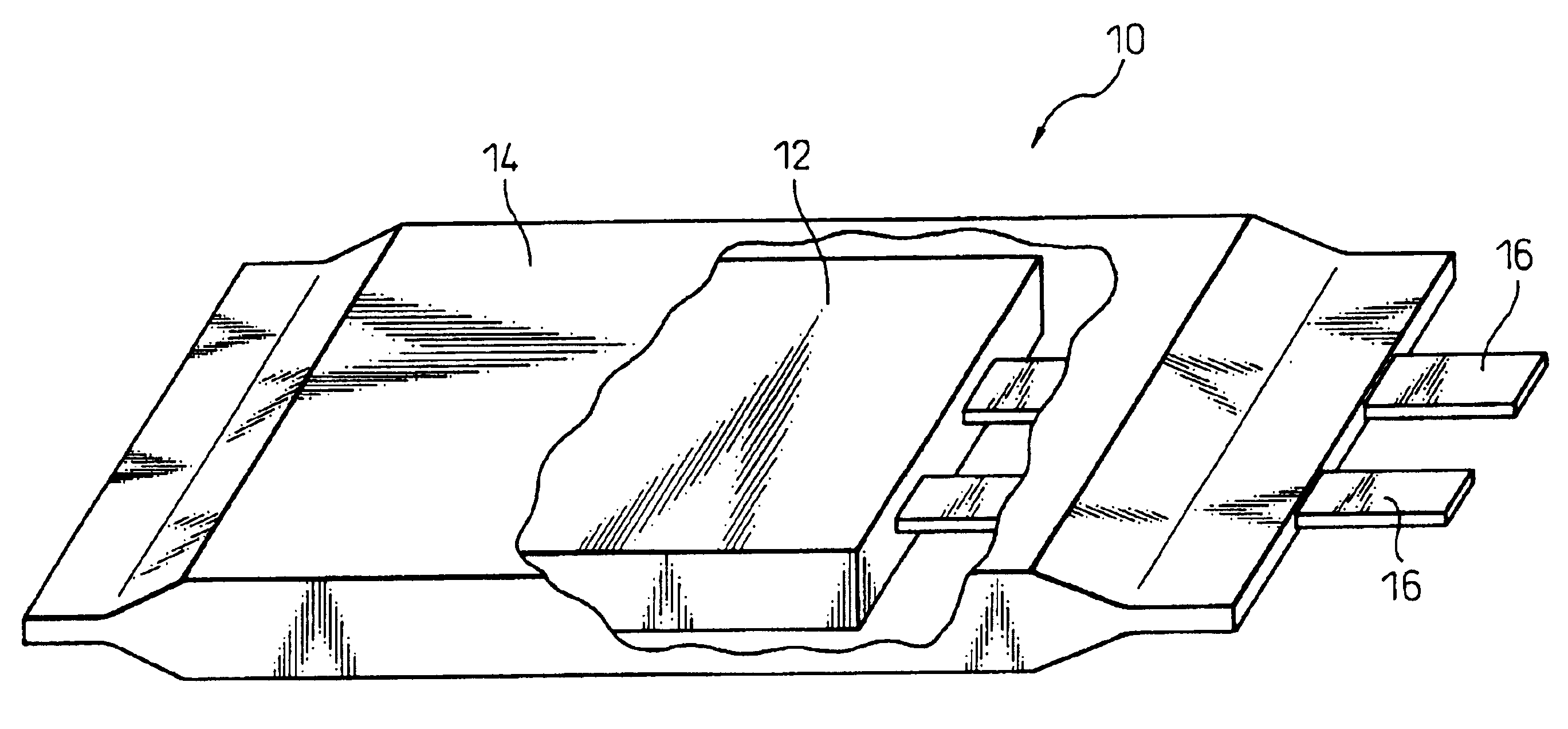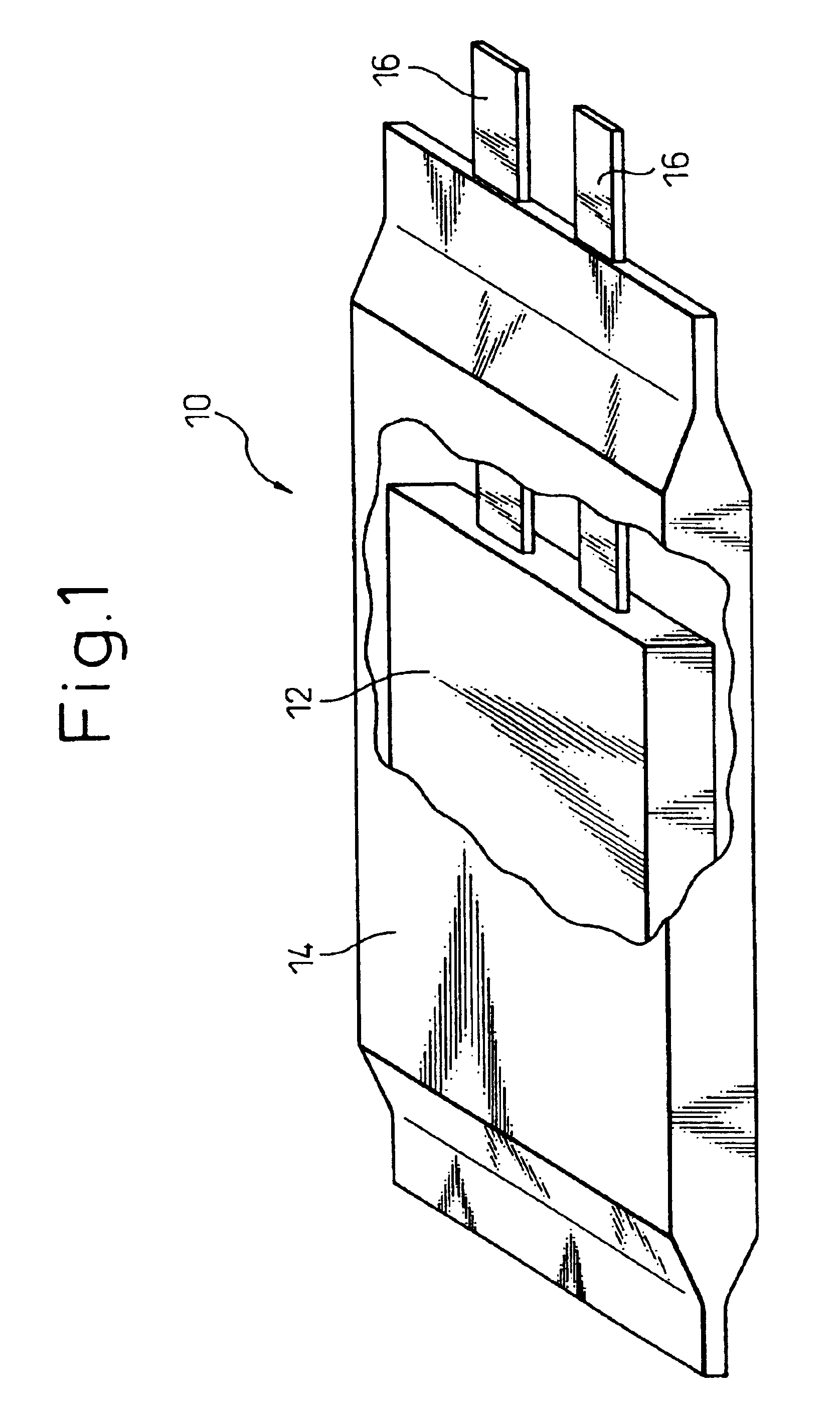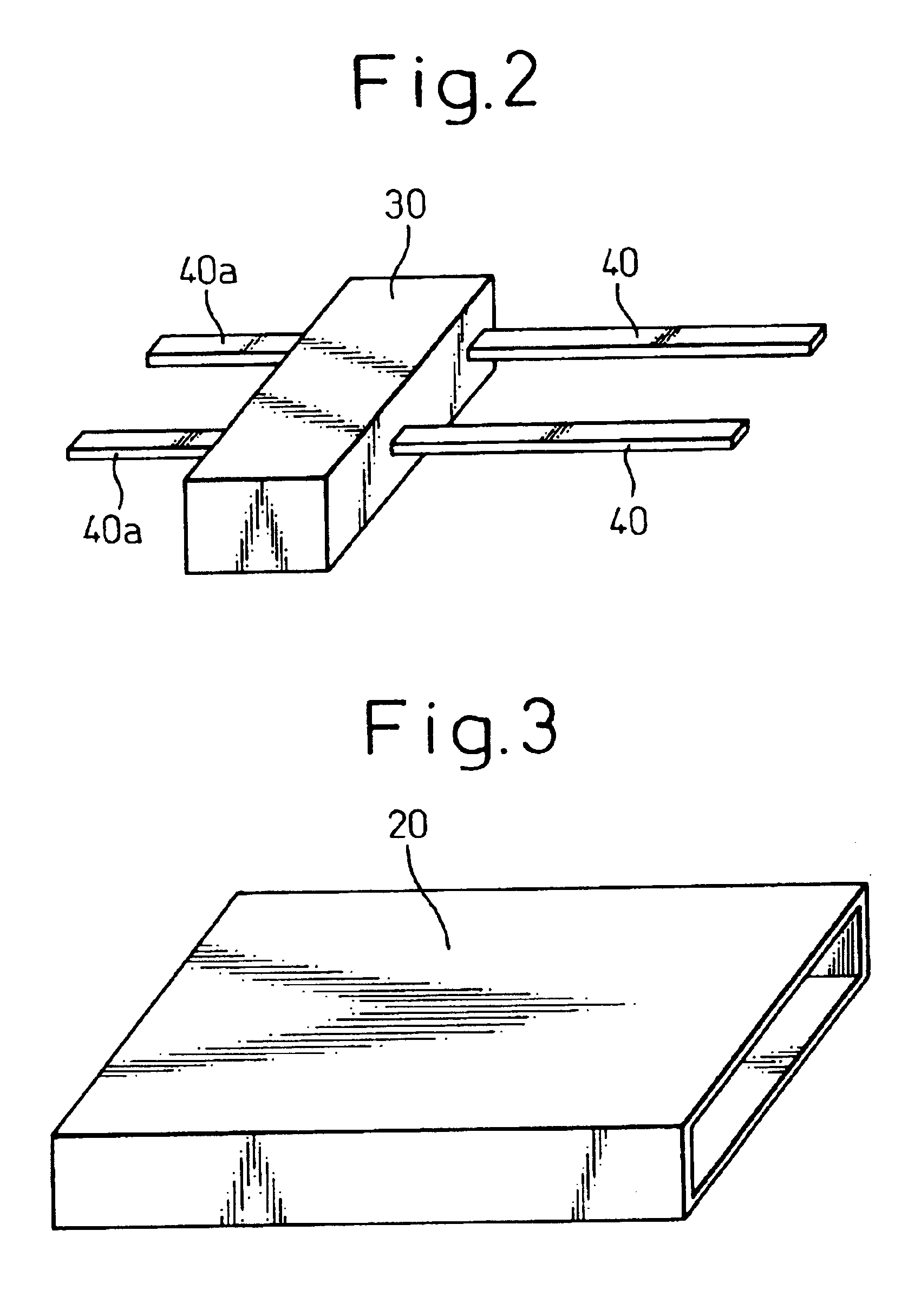Flat aluminum electrolytic capacitor and method of manufacturing the same
a technology of aluminum electrolytic capacitor and aluminum electrolytic capacitor, which is applied in the direction of feed-through capacitors, electrical apparatus casings/cabinets/drawers, casings/cabinets/drawers details, etc., can solve the problems of occupying too much space on the circuit board compared to other electronic components, and reducing the thickness of the apparatus, so as to reduce the void in the casing
- Summary
- Abstract
- Description
- Claims
- Application Information
AI Technical Summary
Benefits of technology
Problems solved by technology
Method used
Image
Examples
example 1
[0094]The capacitor element impregnated with the electrolytic solution was encased in a flexible casing made of PET, aluminum and acid-denatured PP and, after being subjected to an aging treatment with 330 V applied at ambient temperature of 75° C. for one hour, the flexible casing was hermetically sealed thereby to make a capacitor element. Then the flat aluminum electrolytic capacitor having the outer casing was made by the method described above.
example 2
[0095]The capacitor element being impregnated with the electrolytic solution was subjected to an aging treatment with 330 V applied at ambient temperature of 20° C. for one hour, and was encased in a flexible casing made of PP that was then hermetically sealed thereby to make a capacitor element. Then the flat aluminum electrolytic capacitor having the outer casing was made by the method described above.
example 3
[0096]The capacitor element impregnated with the electrolytic solution was, after applying voltage of up to 350 V at ambient temperature of 20° C., subjected to an aging treatment with 330 V applied at ambient temperature of 85° C. for one hour followed by another aging treatment with 350 V applied at ambient temperature of 20° C., with the capacitor element being encased in the flexible casing made of PP that was hermetically sealed under reduced pressure of 100 mmHg thereby to make a capacitor element. Then the flat aluminum electrolytic capacitor having the outer casing was made by the method described above.
PUM
| Property | Measurement | Unit |
|---|---|---|
| pressure | aaaaa | aaaaa |
| pressure | aaaaa | aaaaa |
| pressure | aaaaa | aaaaa |
Abstract
Description
Claims
Application Information
 Login to View More
Login to View More - R&D
- Intellectual Property
- Life Sciences
- Materials
- Tech Scout
- Unparalleled Data Quality
- Higher Quality Content
- 60% Fewer Hallucinations
Browse by: Latest US Patents, China's latest patents, Technical Efficacy Thesaurus, Application Domain, Technology Topic, Popular Technical Reports.
© 2025 PatSnap. All rights reserved.Legal|Privacy policy|Modern Slavery Act Transparency Statement|Sitemap|About US| Contact US: help@patsnap.com



